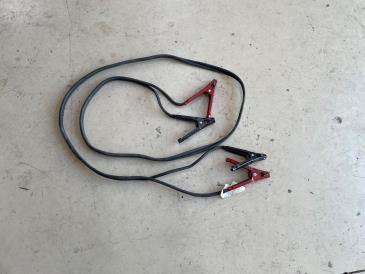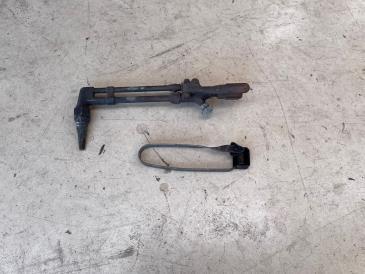
4 minute read
Coromandel Tour 30th
September
written by Roger Wells
At 9am on a fine and sunny morning 18 cars left “Ye Jolly Farmer Inn” at Papakura for what was to be a very enjoyable weekend of vintage motoring. No controls, or route instructions.
The theme was drive your own race, breathe that fresh country air and enjoy yourself, to meet for meal stops only.
Earl Gill in his trusting 1924 Vauxhall 23/60 tourer, was host to Ray Wassell, Ross Taylor and myself. Others included 1924 Gardner, Davis, MG 1936, 1926 Willy’s Knight, 1926 Whippet of Barry Birchall’s, the tour organizer, 3 Model A’s, Austin 6 and a very nimble Brass T.
After repairing our spare on the way to the start we arrived to find all had left. We motored on to morning tea stop at Thames, 71 miles from Auckland on Firth of Thames, after stopping at a couple of local Vineyards to sample another vintage. We met up with other participants here.
Thames was once the centre of the gold mining and kauri cutting activities in the late 1800’s and has remained a highly prosperous centre since, including local industry to maintain its (5700) townsfolk. The Peugeot and Renault Co. have a large assembly plant there now.
We left Thames on a very scenic and windy coastal road, sometimes quite high above sea, with nothing to stop the unwary motorist from falling over the edge. Finally climbing to a lookout giving a vast view of Coromandel Harbour, Island and Inlets, we descended again and arrived in the town of Coromandel at 12 noon.
After collecting provisions (2 doz. Rock oysters for $1.00) we moved around to Long Bay for lunch
(more freedom than its namesake in Sydney). Cars and occupants refreshed, we climbed out of Coromandel on our first encounter with desolate and rugged country, leaving the not so adventurous to tour the coast and rendezvous at Thames that evening.
A wonderful view was had looking back towards Auckland, of Hauraki Gulf, while in our path the vast Pacific Ocean lay in the distance. We arrived at Whitianga for afternoon tea, a popular coastal resort, clean beach and large harbour, the top of our battery box having decided to part company somewhere behind us.
A very rugged crossing of the peninsula was then encountered from Coroglen to Tapu over Coromandel Range. A once thick Kauri forest, now only a few of these awesome giants remain so as not to be forgotten, we wound in and out of mountains, giving views of noted peaks such as Camel’s Back at 2,688 ft and finally descending into the setting sun and following coastal road back to Thames with our shadow on the cliffs beside us keeping us company.
All tired crews were glad to find respective accommodation which in our case was outstanding (Station Hotel), after 180 miles being covered since leaving Auckland.
There were many yarns told over the dinner table, Barry Birchall’s exhaust pipe broke from manifold, and driver of Model T told of ‘modern’ which was approaching him, suddenly swerving off road, finishing in a ditch, bogged to its axles. Obviously its driver amazed by the sight before him lost his senses, when last seen was waiting for a tractor to assist him on his journey.
A fine and sunny morning dawned over a very quiet and sleepy town, although a few locals managed to climb out and view our departure. Heading across again from Tapu to a very steep climb to Kirikiri Saddle with a grand view of the forest, the owners of larger cars proud of their climb in top gear. An unusual site of a Rata arch was viewed, the Rata being a vine which eventually takes over its victim. We overhauled most cars on this section, the Vauxhall very agile for its size. We had morning tea kindly arranged by Andy and Peter Webster’s inlaws at Opoutere, through Tairua Pine Forest, a view of Whangamata and its attractive beach and harbour then to lunch at Karangahake Gorge.
We decided to part company here as Ross Taylor, a keen bush walker knew of an old mining camp site in the Wentworth Valley. A 5-mile drive took us to end of road, unless we forded the stream. As we needed some exercise a short walk brought us to the site. A number of non native trees such as Oak, Pine, Cabbage and even Gum trees and a large clearing were the only signs left, where nearly 100 years ago, one of the largest mining activities in the district was carried out.
Being behind time now we motored quickly to Karangahake Gorge for lunch arriving at 2.00pm to find most fellow vintagents already leaving. Nevertheless we fought the sandflies while eating and viewed a model gold mine over the river where one could pay 50c to try their luck.
It was a better scene than what faced the entrants of International Rally earlier in the year, we fought a severe storm and landslips the first day out of Auckland, leaving a few of us soaked from head to toe.
We returned via Paeroa, the home of the famous mineral water, drunk all over NZ, and noted a very aptly named hotel for those in the dog house called ‘Fathers’. Then through Mangatawhiri and the very lush dairy centre called ‘Happy Valley’, Hunua, which is the centre of the prestige rally of year, ‘The Hunua 100’, next on calendar, then home, with 350 enjoyable miles behind us.
Those who took part seem all in favour of future similar tours being held, with greater support from our Members.
On behalf of all, thanks to the organisers for a great Vintage weekend.
Spares Dept.
Invitation to all club members to visit us on Thursday mornings between 9am and just after midday, when our team of five are sorting our stock out.
In the last four years the spares has had a total change of culture from simply hoarding for decades any donated item until all of the boxes and shelves were overflowing and spilling onto the floor. With storage space being limited we treat every little piece as being valuable. We only keep in stock any item that can be used for the maintenance or restoration of a club eligible vehicle or would fit in a club member’s automobilia collection. Anything else that could be useful goes into our “GOODIES” cabinet where if it has not found a new kind loving home within 6 months it gets the death penalty & is forcibly taken on its final journey to the scrap yard. The “GOODIES” cabinet is freshened with new stock every week, so therefore should be visited regularly. Our process for evaluating every item following identification: Is it worthy of shelf space? If it passes it is labelled, priced, catalogued, and given a shelf location where it can be easily found. Our stock control system is a variation of the same one that has been in place, in the USA wrecking industry for almost a century.
Pictures are the fresh items we have for sale: Selection from the late George Mihaljevich’s shed.











